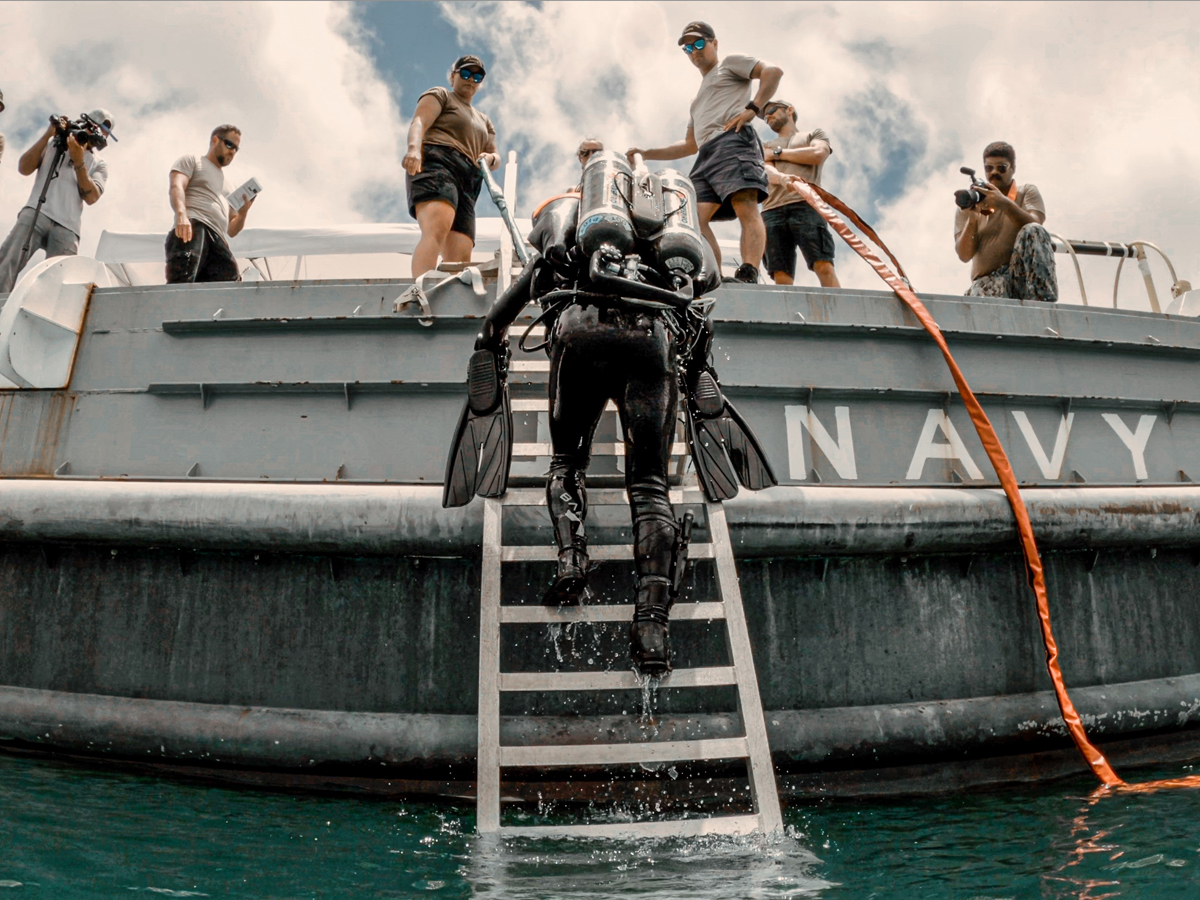Peter Mallett,
Staff Writer
—
Royal Canadian Navy (RCN) Clearance Divers enhanced their light-salvage capabilities during their mission at Exercise Rim of the Pacific (RIMPAC) 2022, which concluded with the discovery of a missing Second World War bomber engine.
While it wasn’t part of their RIMPAC mission, the RCN Dive Team worked to assist the United States Defence POW/MIA Accounting Agency in its search for the bomber. The plane crashed and sank during a 1940s training mission in Kaneohe Bay near Oahu.
Lieutenant(Navy) Lt([N]) Allport, Operational Dive Team Officer with FDU(P) said the team dove for two days in heavy sea states, discovering the bomber’s engine near the east of Kaneohe Bay.
“This was an exciting moment and provided some tangible proof that the overall efforts of the team were important,” Lt(N) Allport said.
The Canadian RIMPAC Dive Team, consisting of eight divers, one engineer from Fleet Diving Unit (Pacific) (FDU[P)], and three divers from Fleet Diving Unit (Atlantic), completed complex exercises while working mainly from the United States Navy (USN) Mobile Diving Salvage Unit 1 in Pearl Harbour.
The training was a perfect fit for the focus of this year’s edition of RIMPAC: large-scale humanitarian assistance and disaster relief operations, says Lieutenant (Navy) Michael Allport.
“Our overall purpose was to enhance our operability between Allied nations’ dive teams and RIMPAC, which provided some valuable training for many of our junior and senior Dive Team members,” said Lt(N) Allport.
Under guidance by USN divers, the RIMPAC Dive Team practised a technique known as hot tapping. This process tests Clearance Divers’s technical skills and abilities to safely extract oil or fuel from the submerged hull of a capsized ship and then return it to holding tanks at the surface. While an actual ship and fuel were not employed, the divers used a model of a non-toxic liquid provided by the USN to accomplish their mission.
“It involved boring through the container, putting a valve on it, and extracting the liquid inside,” said Lt(N) Allport. “It’s a slow and meticulous process to get it right but eventually we accomplished our goal.”
The team also participated in an exercise to install cofferdams into a Mud Monster, a sunken underwater trainer designed by the USN. Divers enhanced their training by working to repair the holes in the Mud Monster and float it to the surface to varying degrees of success.
A cofferdam is a gasket pressuring a submerged hull space and restoring buoyancy to a ship or Mud Monster. Divers spent nearly three days diving down, measuring, and cutting the pieces of wood and foam to create an air-tight seal.
“It’s a very difficult task underwater and the patches need to be exact,” said Lt(N) Allport. “The idea was to seal up these holes so the Mud Monster had buoyancy. Using a compressor and hoses, not a whole lot of air is needed to introduce an incredible amount of pressure on these patches.”
The RCN team was also involved in a scenario that raised a helicopter’s frame through an air compressor and lifted bags.
As the team prepared to pack up their gear and begin their transit back to Victoria, Lt(N) Allport concluded their mission at RIMPAC was successful and overall a positive experience. While it not only helped strengthen and enhance FDU relationship with the USN, Lt(N) Allport said it was also of great benefit to several of its members who were participating in their first RIMPAC mission.
USN members also assisted other dive teams from Mexico, the Netherlands, and Australia during RIMPAC.
“We brought a fairly junior team with us to RIMPAC and I think they got a lot out of it,” said Lt(N) Allport. “Some of these skill are seldom practised at home so it’s nice to get here and practice them in warmer waters and more favourable dive conditions.”










